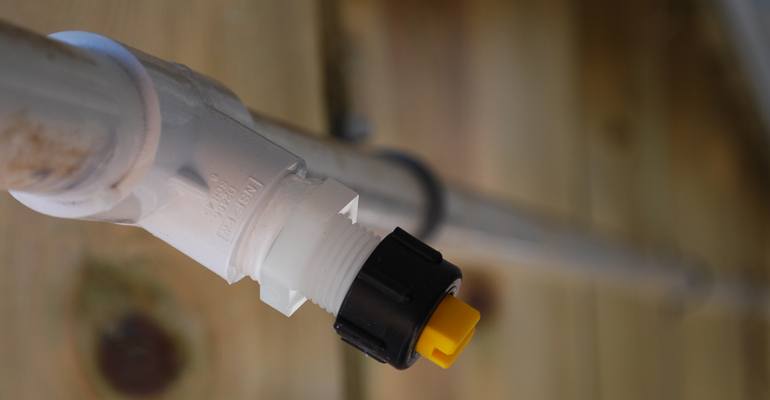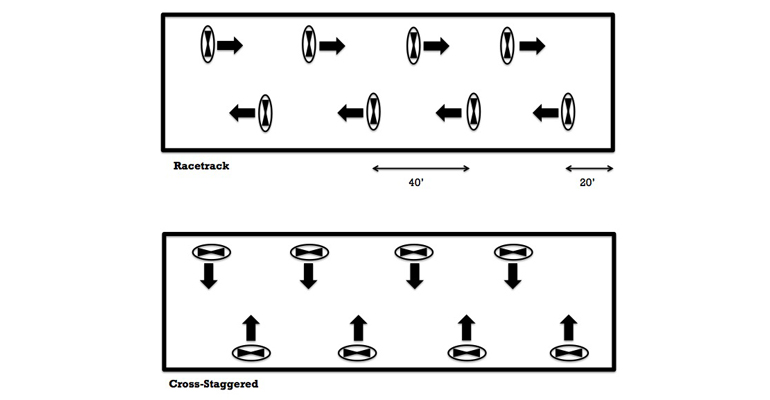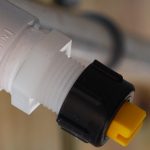Stir fans and sprinkler systems remain a cost-effective method to reduce summer heat stress for finishing pigs.
Although tunnel ventilated finishing houses are the most common choice for new construction, many curtain-sided, naturally ventilated buildings are still in use. The summer performance of these facilities can be improved by utilizing a combination of stir fans and a sprinkler system to reduce the animal’s heat stress.
Pigs feel a cooling effect as high-velocity air from the stir fans moves across their body. By wetting the pig’s skin, we increase the cooling effect as the air evaporates the water removing heat from the animal.
For direct cooling to work efficiently, the pig’s skin should be thoroughly wetted and then allowed to dry completely. The wetting and drying cycle is a critical part of the process. If the pigs are continuously wet, the humidity rises which in turn reduces the amount of cooling by evaporation.

Choose nozzles that produce coarse droplets versus a fine mist. Large drops fall quickly, thoroughly wetting the pigs while a fine mist hangs in the air increasing humidity. The control system should include an adjustable timer enabling the system to operate for two to four minutes every 15-30 minutes after reaching the temperature set point.
For optimum cooling, strive for an air velocity of 300 feet per minute at pig level. The effective thrust of a fan is 2X (in feet) of its diameter.
For example:
- 18-inch fan — 36 feet
- 20-inchfan — 40 feet
- 24-inch fan — 48 feet

We show typical layouts for 40-foot x 200-foot finishing building with both a racetrack and cross-staggered patterns. Angle the fans in the racetrack pattern at about 20 degree toward the middle.
Stir fans also do an effective job circulating stratified air during colder weather. Low winter ventilation rates decrease air movement in the building creating a 5 to 10-degree temperature difference from floor to ceiling. By slowing the stir fans to a minimum speed, a gentle circulation pattern mixes the layered air. Forcing the warmer air to the floor reduces heating costs and results in drier slats. Tilt the fans toward the ceiling and monitor airflow at floor level being aware that movement greater than 50 fpm can feel like a draft to the pigs.


